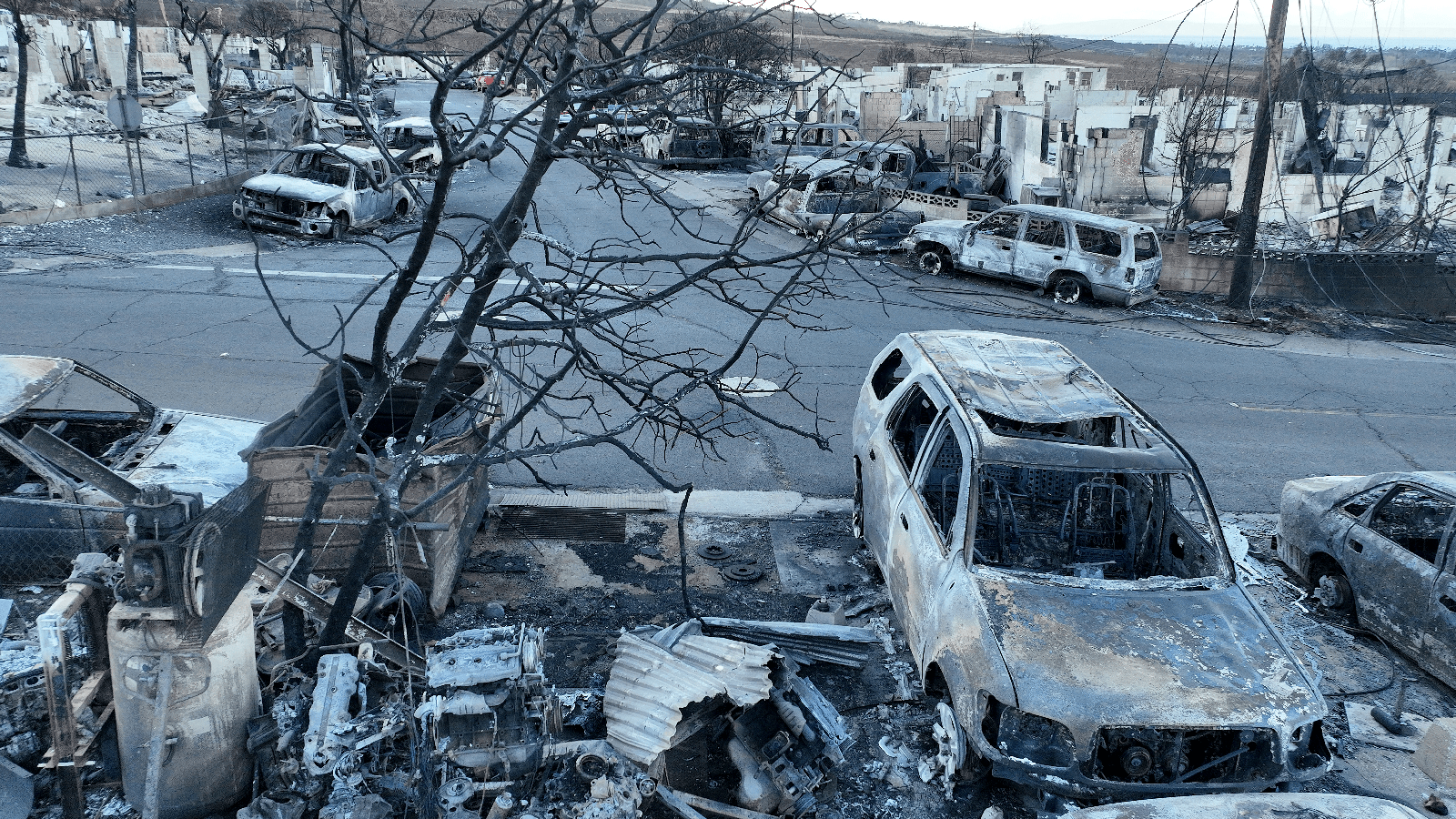Destructive wildfires from Maui, Greece, and Canada made front-page news in the U.S. this year. But anyone who follows fire and climate news knows that large, often deadly, and uncontrollable fires are increasingly common throughout our warming world.
Though the articles focus on wildfires in the western U.S. and Canada, their insights pertain to much of the globe.
What today’s wildfires are like
“Why wildfires are at their deadliest in more than a century.” Scott Dance, Washington Post. “The massive wildfires can be linked to fire hazards — drought, wind, human-caused climate change — that have accelerated over recent decades.”
“America’s new wildfire risk goes beyond forests.” Nadja Popovich, New York Times. “Forest fires may get more attention, but a new study reveals that grassland fires are more widespread and destructive across the United States. Almost every year since 1990 … grass and shrub fires burned more land than forest fires did, and they destroyed more homes, too.”
“California and Colorado fires may be part of a climate-driven transformation of wildfires around the globe.” Michael Kodas, Inside Climate News. “Wildfires from Australia to Siberia are not just larger, hotter and faster, but burning in areas and seasons where they were previously rare.”
“1 in 6 Americans live in areas with significant wildfire risk.” John Muyskens, Andrew Ba Tran, Naema Ahmed, and Anna Phillips, Washington Post. Enter your ZIP code into this detailed, interactive map to see your own neighborhood’s risk.
What comes after a wildfire
“How megafires are remaking the world.” Emily Anthes, New York Times. “Fire is a natural phenomenon; some species actually benefit from its effects and even those that don’t can be remarkably resilient in the face of flames. But as fires intensify, they are beginning to outstrip nature’s ability to bounce back.”
“After the blaze, coping with ‘firebrain’.” Marlene Cimons and Kim Bellware, Washington Post. It’s not just post-traumatic stress (“depression, sleep disorders, anxiety and survivor’s guilt”); it’s also becoming clear that “breathing in the tiny particles from wildfire smoke can produce cognitive deficits.”
“The long-lasting mental health effects of wildfires.” Jane C. Hu, Outside. “There are just a handful of finished studies that have tracked wildfire survivors’ mental health symptoms beyond the immediate aftermath, and they suggest the effects can be far-reaching.”
What might reduce the severity of forest fires?
“How to save a forest by burning it.” Raymond Zhong, New York Times. “Scientists are beginning to use cutting-edge technology and computer modeling to make controlled, low-intensity burns safer, more effective and less disruptive to nearby communities.”
“What is cultural burning?” Miki Perkins, Sydney Morning Herald. Indigenous Australian burning traditions are having a comeback, both on their own continent and, slowly, elsewhere. Done with more care and local knowledge than “prescribed” fires elsewhere, these “cool” burns have benefits beyond fuel reduction.
“Has the Forest Service been making wildfires worse?” Christopher Ketcham, New Republic. “Years of wildfire research … contradict the notion that logging helps suppress fire.”
Series, podcasts, books
“Learning to live with wildfires.” Kate Anderson, Sightline Institute. Overview series of texts and podcasts focused on the Pacific Northwest/Cascadia.
“‘This is Wildfire’ book explores our relationship with wildfire.” Scott Tong and Thomas Danielian, WBUR. Interview with authors Justin Angle and Nick Mott and excerpt from “This is Wildfire: How to Protect Yourself, Your Home, and Your Community in the Age of Heat” (2023). Angle also hosted (and Mott produced) a related podcast, Fireline (Montana Public Radio).
“What Canada’s most expensive disaster ever teaches us about climate change.” Joseph Winters, Grist. Interview with John Vaillant, author of Fire Weather: A True Story from a Hotter World (2023), focused on the 2016 fire in the tar-sands oil town, of Fort McMurray, Alberta.
Source link


